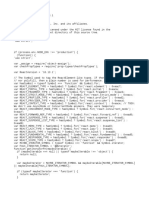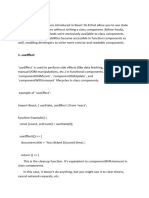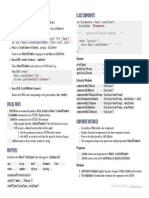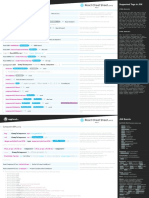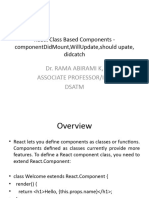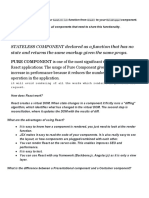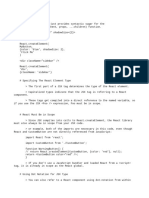0% found this document useful (0 votes)
22 views2 pagesReact Profiler API Guide
The React Profiler measures how often a React application renders and the cost of rendering. It helps identify slow parts of an app that could benefit from optimizations. Profiling adds overhead so it is disabled in production. The Profiler component requires an id and onRender callback prop. React calls the callback when a component renders to provide timing details. Multiple Profilers can measure different parts of an app or components within a subtree.
Uploaded by
Tanzeel Ahmad MujahidCopyright
© © All Rights Reserved
We take content rights seriously. If you suspect this is your content, claim it here.
Available Formats
Download as TXT, PDF, TXT or read online on Scribd
0% found this document useful (0 votes)
22 views2 pagesReact Profiler API Guide
The React Profiler measures how often a React application renders and the cost of rendering. It helps identify slow parts of an app that could benefit from optimizations. Profiling adds overhead so it is disabled in production. The Profiler component requires an id and onRender callback prop. React calls the callback when a component renders to provide timing details. Multiple Profilers can measure different parts of an app or components within a subtree.
Uploaded by
Tanzeel Ahmad MujahidCopyright
© © All Rights Reserved
We take content rights seriously. If you suspect this is your content, claim it here.
Available Formats
Download as TXT, PDF, TXT or read online on Scribd
/ 2



